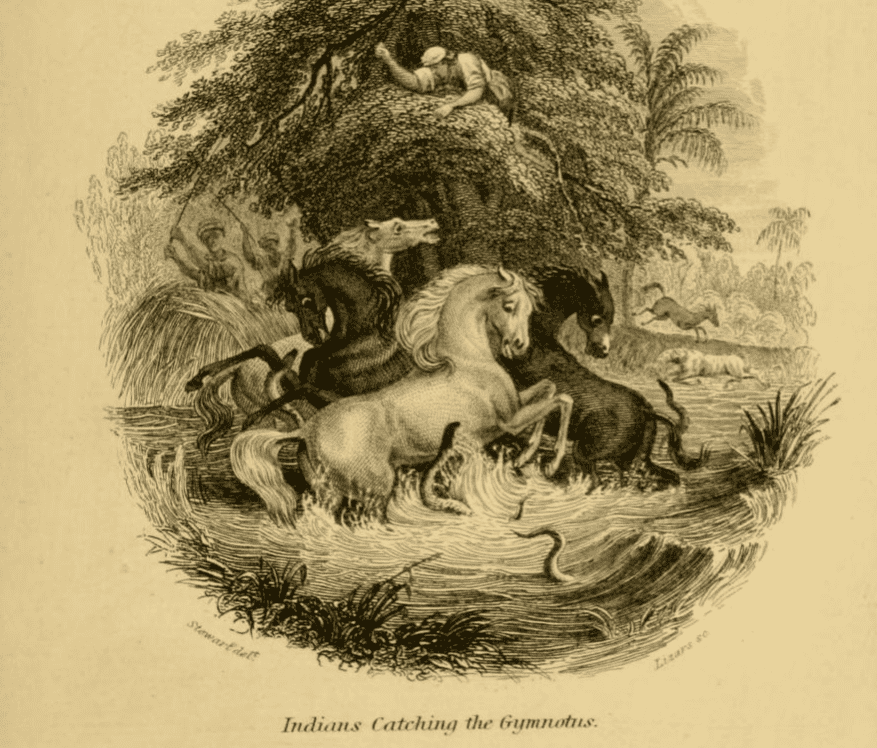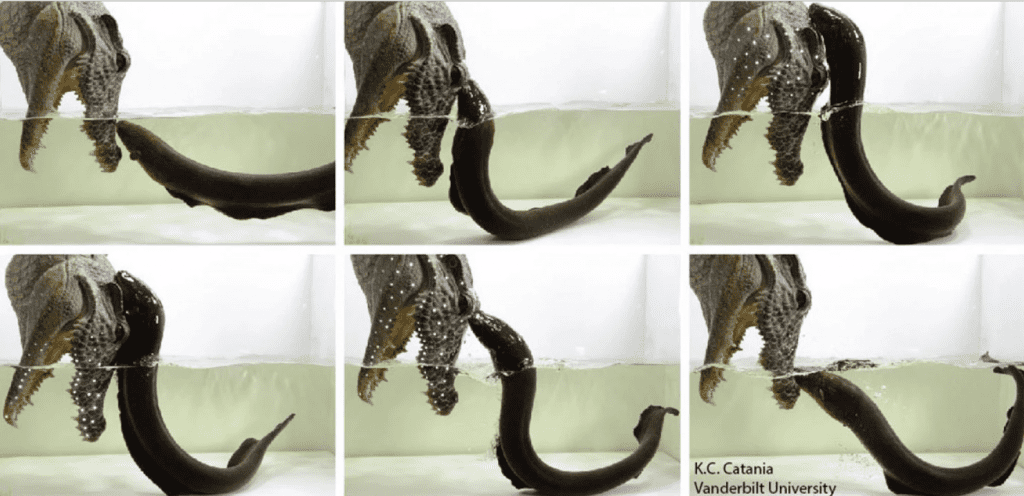
Kenneth Catania, the Vanderbilt University professor who you might previously remember as ‘the dude who discovered moles smell in stereo’, just confirmed one of the most famous biology myths. Completely by accident, but not without subsequent effort and a keen eye typical of a McArthur genius, Catania proved that eels do in fact employ an awesome defence mechanism in which they leap out of the water to stun threats like predators.
To appreciate the significance of this diligent research, we need first to recount the backstory.
It was the year 1800, during the dry season, and German naturalist Alexander von Humboldt was in the Amazon where he was documenting new species, demystifying myths and all sorts of other scientific endeavours. Among his many interests were eels due to their natural electrical generation (remember this was the early 19th century and electricity was still new). He eventually met some Amazonian natives who promised him some live eels he could take back home.
Humboldt was jubilant and followed the men on horseback to shallow ponds and streams where the natives knew they could find the much sought after eels. The seasoned fishermen then submerged their horses in the shallow stream and the eels immediately attacked the animals’ throats. The barrage of electrical discharged stunned some of the horses causing them to sink in the water where they eventually died, but also depleted the eels which function like electric batteries. Then, the natives simply picked the tired eels with their bare hands.
After Humboldt had returned to Germany, he wrote a book about his travels to the Amazon which included this story. Even then the account was viewed with skepticism, but as the years passed fewer and fewer scientists actually believed any word of it.
Catania was also one of those people who was suspicious of Humboldt’s Amazonian eel fishing, until one day it happened to him. One of the eels in his lab suddenly leaped in an offensive maneuver when Catania tried to net the slithery electric fish. The animal went straight for Catania’s hand which it zapped with trademark 600-volt pulses. Luckily, Catania was wearing gloves but the whole event “was pretty intimidating,” says Catania. “I made a little note to myself to come back and study this.”
Eventually, Catania and colleagues from his lab set up an experiment. First, they measured the eel’s volleys using conducting rods hooked up to a voltmeter. Later, they strapped LEDs to a fake crocodile head and a plastic prop arm, which they then submerged in a water basin which the eel called home. The video footage is telling. “This behavior is exactly what you’d expect the eels to have done from Humboldt’s story,” he said.
Catania says this shocking behaviour is purely defensive, as the eels never tried to bite its victim. He argues that the eels have adapted this behaviour to cope with predatorial threats during the dry season when the water is shallow, and there’s not much room to escape. “I have been specializing in unusual animals for a lot of my career, and I always underestimate the animals,” Catania told Slate. “They always do something that amazes me.”
The paper which confirmed Humboldt’s story was published today in the Proceedings of the National Academy of Sciences.



